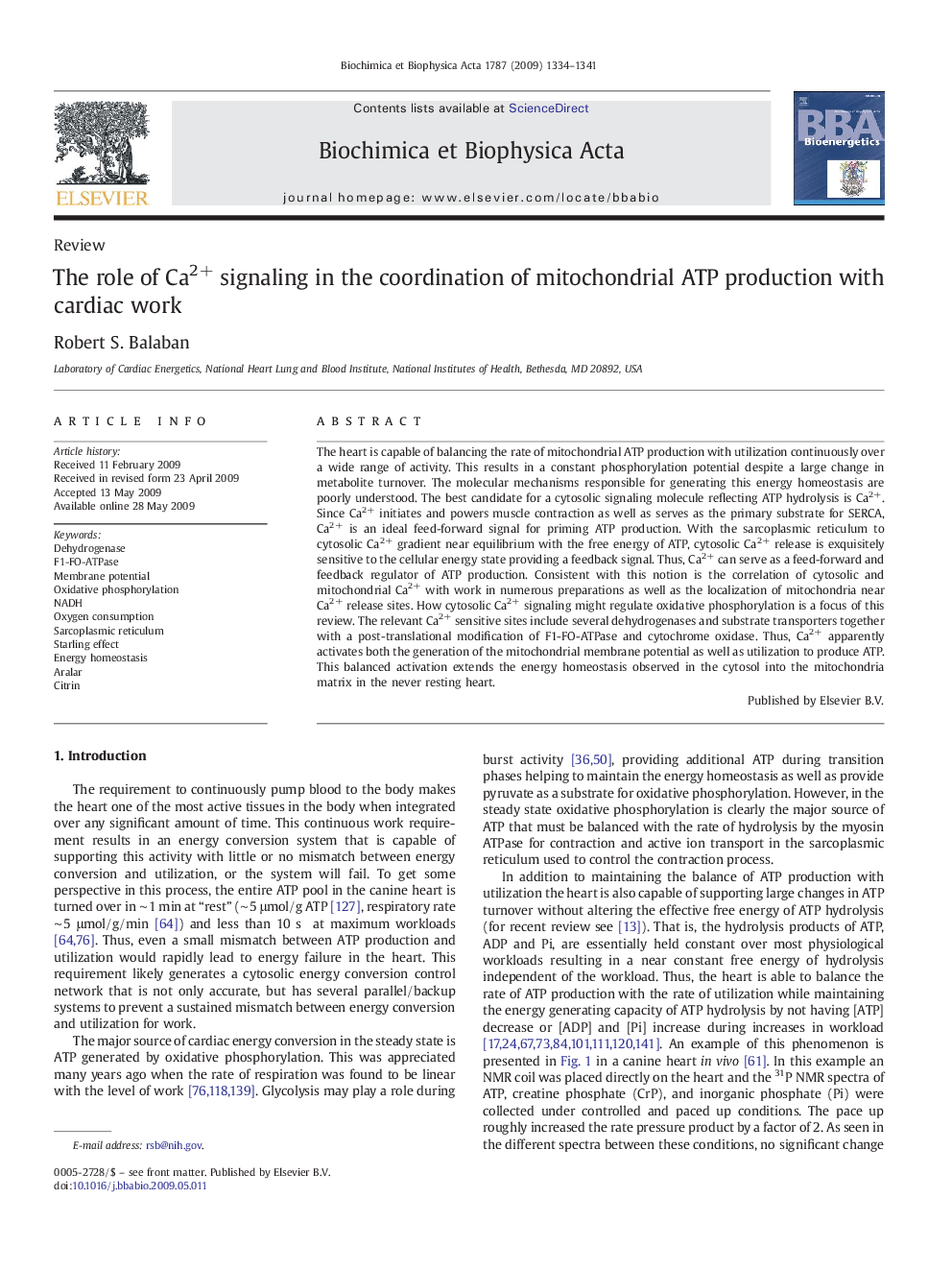| کد مقاله | کد نشریه | سال انتشار | مقاله انگلیسی | نسخه تمام متن |
|---|---|---|---|---|
| 1943037 | 1052642 | 2009 | 8 صفحه PDF | دانلود رایگان |

The heart is capable of balancing the rate of mitochondrial ATP production with utilization continuously over a wide range of activity. This results in a constant phosphorylation potential despite a large change in metabolite turnover. The molecular mechanisms responsible for generating this energy homeostasis are poorly understood. The best candidate for a cytosolic signaling molecule reflecting ATP hydrolysis is Ca2+. Since Ca2+ initiates and powers muscle contraction as well as serves as the primary substrate for SERCA, Ca2+ is an ideal feed-forward signal for priming ATP production. With the sarcoplasmic reticulum to cytosolic Ca2+ gradient near equilibrium with the free energy of ATP, cytosolic Ca2+ release is exquisitely sensitive to the cellular energy state providing a feedback signal. Thus, Ca2+ can serve as a feed-forward and feedback regulator of ATP production. Consistent with this notion is the correlation of cytosolic and mitochondrial Ca2+ with work in numerous preparations as well as the localization of mitochondria near Ca2+ release sites. How cytosolic Ca2+ signaling might regulate oxidative phosphorylation is a focus of this review. The relevant Ca2+ sensitive sites include several dehydrogenases and substrate transporters together with a post-translational modification of F1-FO-ATPase and cytochrome oxidase. Thus, Ca2+ apparently activates both the generation of the mitochondrial membrane potential as well as utilization to produce ATP. This balanced activation extends the energy homeostasis observed in the cytosol into the mitochondria matrix in the never resting heart.
Journal: Biochimica et Biophysica Acta (BBA) - Bioenergetics - Volume 1787, Issue 11, November 2009, Pages 1334–1341